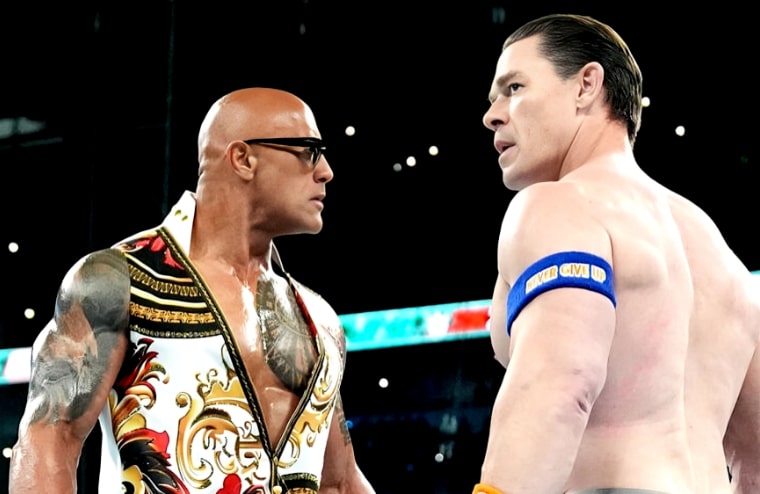(Editor’s note: WebIsJericho.com writer B.J. Lisko has been working on material for a Brian Johnson-era AC/DC book. This largely untold story comes from those interviews, and due to the more timely nature of the subject matter is being released in two parts as a Web Is Jericho exclusive.)
Amsterdam. February 2020. The whole world is about to fall into a collective coma, but just a month prior, AC/DC have reconvened at a top secret location. The objective? Full-on, full volume rehearsals to ready for shows on the heels of their forthcoming album, “Power Up.” The last time we heard about Brian Johnson, he was reportedly on his front door step retrieving road gear shipped back to him by the band during the “Rock or Bust” tour.
Most of the world doesn’t know it yet, but for “Power Up” and in Amsterdam, not only is Johnson back, so are bassist Cliff Williams and drummer Phil Rudd. Williams retired, and Rudd nearly forced a retirement of his own with drug and legal problems four years prior. None of that matters, however, if a tiny invention by a world renowned audio engineer doesn’t work.
Steven Ambrose, inventor of the Ambrose Diaphonic Ear Lens (ADEL), is in the rarest of positions. Not only is he a first-hand witness to the highly-secretive rehearsal proceedings, he’s the wild card to getting the AC/DC show back on the road. “Obviously there’s quite a lot of stress and importance on the line,” Ambrose said. “I put them in Brian’s ears, and he walks out on stage …”
“That was the darkest day of my professional life.”
AC/DC singer Brian Johnson, when he was forced to step away from the band in 2016 due to hearing issues.
Going “Bust”: Rewind to February 28, 2016. AC/DC’s “Rock or Bust” tour has rolled into Kansas City as part of the fifth leg of a journey that started April 10 of the year prior. For the audience, it seems like business as usual, as the band rips through its 20-song set. For AC/DC and their singer, however, it’s anything but. Johnson sounds in fine form, but he’s getting by on muscle memory. The 68-year-old singer is struggling to hear the massive band he’s fronting.
“I was having difficulty hearing the guitars on stage,” Johnson went on to say in a later statement. “Because I was not able to hear the other musicians clearly, I feared the quality of my performance could be compromised. In all honesty, this was something I could not in good conscience allow.” Doctors told him he had to stop performing or risk going deaf. And just like that, 36 years after joining the band, hundreds of millions of albums sold and having performed all over the globe to countless fans, Johnson was out of AC/DC. “That was the darkest day of my professional life,” he said.
Guns ’N’ Roses frontman Axl Rose stepped in, and AC/DC finished the “Rock or Bust” tour, but if their latest album title was posed as a question regarding their future, the answer would be the latter. Ticket sales and revenue were fine. It was the band itself that had gone bust.
Rhythm guitarist and band co-founder Malcolm Young was out of the picture as he suffered with dementia. Rudd managed to get his personal issues together enough to play on “Rock or Bust,” but then allegedly got into hard drugs, a legal mess and was sentenced to eight months of home detention in New Zealand after pleading guilty to charges of threatening to kill and possession of marijuana and methamphetamine. AC/DC recruited “Razors Edge” drummer Chris Slade and ex-touring guitarist Stevie Young, a nephew of Angus and Malcolm. The band was starting to fracture prior to Johnson’s exit, and later with Rose in tow to salvage the rest of the tour, Williams announced he wanted out. “Losing Malcolm, the thing with Phil and now with Brian, it’s a changed animal,” Williams said in an emotional video message to fans. “I feel in my gut it’s the right thing.”
Ambrose to the rescue: While the Axl-fronted AC/DC began a European leg of the “Rock or Bust” tour, Ambrose, most well-known as the creator of the wireless in-ear monitor, shared an open message to Brian Johnson via video. “Please don’t stop performing,” Ambrose said. “Help is on the way. Nobody should have to go deaf performing on stage, driving race cars, or simply listening to their phone. My life’s work has been dedicated to solving this.” Ambrose explained the technology of the ADEL with a story straight out of Amsterdam. “Angus had all of his Marshalls cranked up on stage,” he said. “I don’t need any more hearing loss. Especially as an engineer and a designer in audio. So I’ve got the ADELs in my ears, and the band is totally cranked.”
Even with Angus turned up to 11, Ambrose’s hearing was totally isolated. “I can hear a little bit or a medium amount or as much as I want just by inflating and deflating the device,” Ambrose said. “I had inflated them and put my head inches from the grill on one of his Marshalls, and the thing is just blasting. I’m right there, and I had to put my hand on the grill to tell if that particular speaker was on. THAT is isolation.”
The ADEL uses an inflation method that gently conforms to the ear canal, but unlike in-ear monitors or even ear plugs, it absorbs harmful in-ear pressures and allows people to more safely hear sound the way it is meant to be heard. “It’s air suspension like you have on trucks,” Ambrose said. “It keeps the bubble and re-inflates it and allows it to softly stay sealed in your ear. If you put it in the deflation position, it deflates. So you put it in your ear, and it will pump up and ride with your ear. If you want to hear more, you start to deflate it. And all the sudden you don’t have nearly as much isolation, and you can feather in ambient sound that you want.”
Ambrose explained the problem with his first invention — the wireless in-ear monitor. “It’s a tremendous but very simple oversight that nobody ever realized — you’ve got acoustics, which is sound waves, and you’ve not pneumatics, which is like what inflates your tires,” he said. And Ambrose said, when you seal a speaker in the ear, you have both. “And if hearing aids and ear buds were made by people who made bicycle pumps or shock absorbers or compressions, they would know immediately that if you have a reciprocating piston or diaphragm moving in a tube like the ear canal, that it’s pneumatic. Yeah it also makes sound, but it’s really pneumatic.”
Audio experts previously claimed that with in-ear monitors, ear buds and headphones, people are simply sealing sound in the ear. “No, you’re not just sealing sound in the ear, you’re sealing the sound source, and it’s making pneumatic pressure,” Ambrose said. “And it just got totally overlooked.” Years prior, when Ambrose announced his discovery, major scientists in the audio industry claimed that it couldn’t be true. “They said, ‘There’s no extra turbulence in there. There’s no extra pressure. It’s just what we can measure with sound.’”
“Nothing could be further from the truth,” Ambrose said. “Now, it’s self-evident and it’s widely accepted. Just applying that as a science restores hearing function in people who have lost it like Brian.”
- Wallflowers Frontman Blasts John Mellencamp On Stage - April 18, 2024
- AEW Star Was Encouraged To Ask WWE For A Tryout - April 17, 2024
- Metallica’s James Hetfield Put Lemmy’s Ashes To Use In Touching Tribute - April 17, 2024




